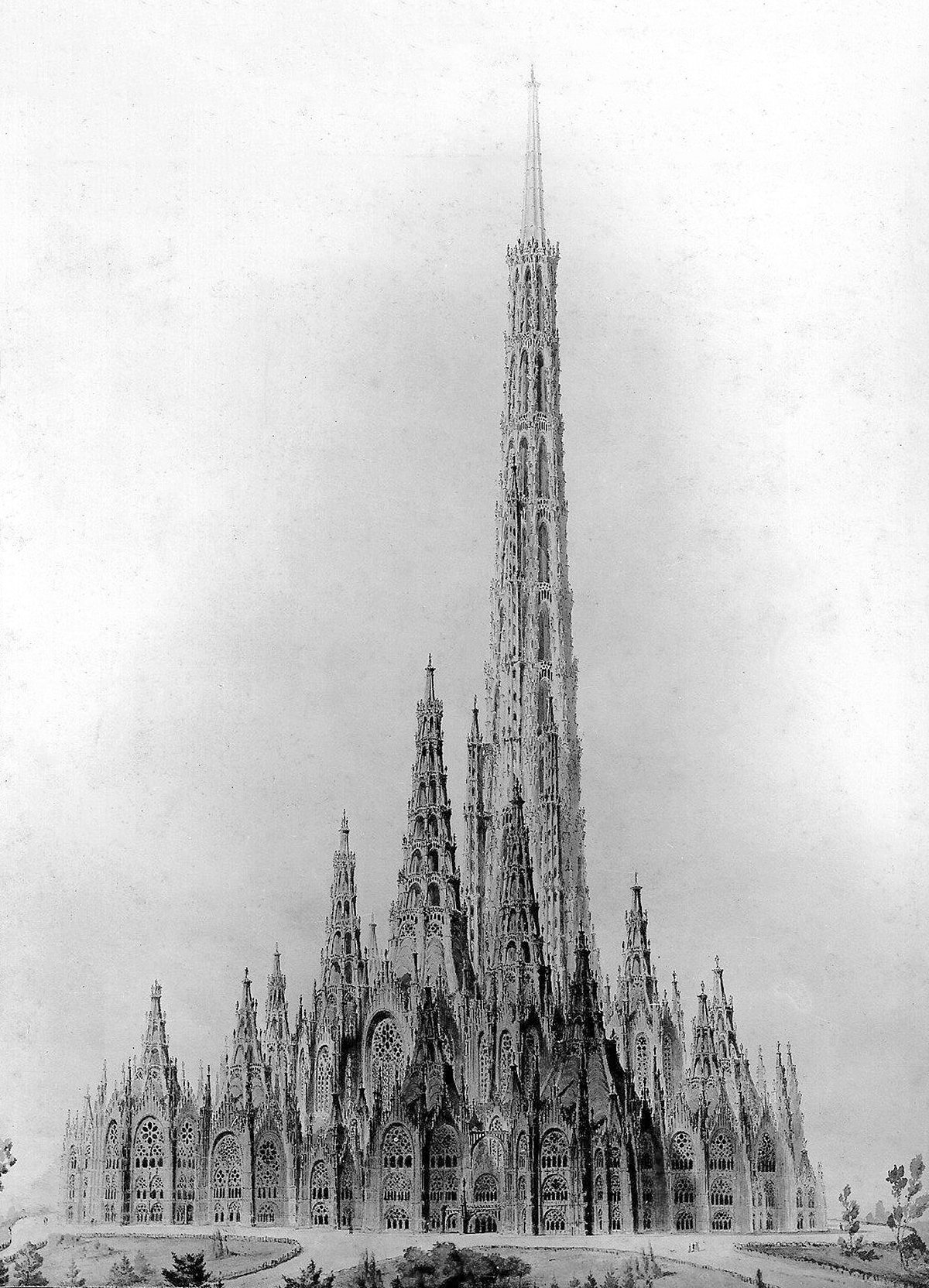Friedrich Gösling’s Proposal for the Reichstag
1871 proposal for the original Reichstag building by Friedrich Gösling. The design is a neo-Gothic pile of spires and pinnacles that seems to point up to the sky.
Pictured above is a competition entry for the original Reichstag building in Berlin. It was designed in 1871 by German architect Friedrich Gösling, and it’s a big departure from the Neoclassic design that ended up getting built. Gösling intended the design to embody the German way of life and the German idea of the state. He expressed these ideas with an organic plan and a Neogothic structure that seems to point upward with its myriad steeples and pinnacles. I suspect this upward focus was Gösling’s idea of the German way of life in built form, because it’s so prevalent throughout his design. He was using verticality to project a sense of optimism about Germany and its future.
I’ve seen many comparisons between this and the work of Antoni Gaudí. This design pre-dates Gaudí’s iconic works by a few decades, so an argument could be made that Gösling influenced Gaudí, but I’ve found no evidence to support this. One thing is clear, however. Both men were heavily influenced by the Gothic styles of the Middle Ages. These styles saw the proliferation of vertical elements, resulting in buildings that embodied a sense of verticality. Gösling’s Reichstag does this and then some. Nearly every element of his design points upwards, and the lower elements seem to cluster around the central spire, as if they’re huddling together to be as close to the tallest element as possible. The end result is a building that screams look up!
I’ve previously written about how this upward focus makes perfect sense for religious buildings, but its application here is different. In a religious building, the upward focus is a metaphor for the creation of a heaven on earth. When it gets applied to a civic building, this focus shifts to an upward motion of the surface world to the sky. In effect, Gösling is saying that the sky is the limit for the German people, and Germany will continue to ascend on the world scale. Whether or not this translates to a functioning floor plan is another story entirely.
Check out other posts about unbuilt architecture here.


